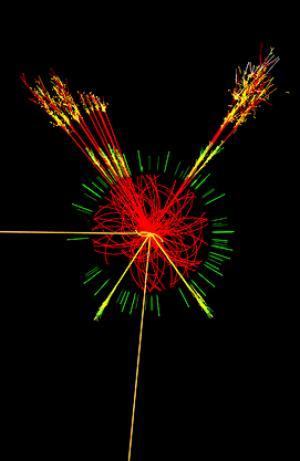Please note: Osher Rainforest will be closed for maintenance May 7-9.
Science News
The Elusive Higgs
December 14, 2011

It has been challenging times of late for standard physics. Neutrinos faster than the speed of light—or not? Particle colliders finding the elusive Higgs boson—or not?
This summer, it looked dismal for the so-called God particle. But this week, brighter news appeared on the horizon. The Higgs field gives particles their mass and discovery of the Higgs particle (which The New York Times describes as “the quantum personification of this field”) would confirm a critical part of the Standard Model of physics, which describes the basic building blocks of matter and their interactions.
The Large Hadron Collider was essentially built to discover the Higgs—to prove its existence. But after two years and 600 million collisions per second, the Higgs particle has remained elusive.
A data release yesterday presented the current state of the search, with tantalizing results. Two detectors—the ATLAS and the CMS—seem to have detected something although it may or may not be the Higgs boson.
After the near light-speed collisions, the detectors record the (sometimes new) particles and their decay. Scientific American explains:
The experiments… cannot directly detect the Higgs, because the boson would decay within a fraction of a nanosecond into other particles. Instead, physicists must search through the debris of many different types of particle decay to find precise combinations of by-products that the Higgs would produce.
Both ATLAS and CMS have analyzed their separate results, suggesting the existence of a particle with just the right amount of mass. In fact, there are multiple independent measurements pointing to the region of 124 to 126 GeV (the rather odd units in which physicists measure the mass of such particles). It’s too early to say whether ATLAS and CMS have discovered the Higgs boson, but these updated results are generating a lot of interest in the particle physics community.
The Bad Astronomer puts it this way in Discover:
Scientists at CERN cannot claim with enough confidence they have found the Higgs particle, but neither can they rule it out. There’s a good chance they have found something, and it very well may be real, but they cannot say with complete confidence that it’s the Higgs.
Ah, the ambiguities of subatomic physics! Only more collisions and time will tell. In the coming months, both the CMS and ATLAS experiments will focus on refining their analyses in time for the winter particle physics conferences in March. After the current winter break, the experiments will resume collisions in spring 2012.
Higgs-hunting scientists conducting experiments using the U.S. particle accelerator the Tevatron will also present results in March.
More Higgs news then!
Image courtesy of DOE/Brookhaven National Laboratory